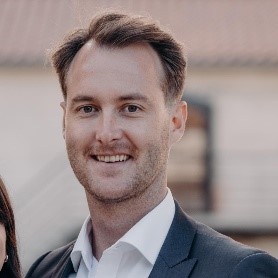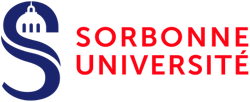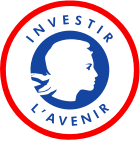Louis Parker
CardioVascular Imaging (iCV), Biomedical Imaging Laboratory (LIB)

Awards / Distinctions
- 2024 Marie Skłodowska-Curie – European Commission
- 2023 Postdoctoral fellowship
- 2020 for biomedical engineering.
- 2018 Mimics Innovation Award
- 2016 William and Marlene Schrader Scholarship
Training
I studied mechanical engineering at the University of Western Australia (UWA). My interest in biomechanics began during my Master’s project, in which I worked with the Vascular Engineering Laboratory (VascLab), applying my knowledge of computational fluid dynamics (CFD) to the analysis of blood flow in aortic and iliac aneurysms. What appealed to me was the freedom to apply my skills to a wide range of complex problems. I then stayed in the lab to do a PhD, focusing on another aortic disease, aortic dissection. I traveled extensively in Europe during this period and knew that there was a much larger community of researchers with whom I could make contact. I then accepted a post-doctoral position at the Royal Institute of Technology (KTH) in Stockholm, where the team collaborated with the extracorporeal resuscitation team at Karolinska University Hospital. Extracorporeal membrane oxygenation (ECMO), which involves extracting blood and oxygenating it outside the body, was increasingly used during the COVID-19 pandemic. We used CFD to analyze a series of potential configurations on a synthetic patient with the aim of optimizing treatment. During my time in Australia and Sweden, I learned that good imaging is essential to obtain a good computational model. I was very keen to use 4D MRI to improve the accuracy of my models.
Consequently, I knew that for my future career, I wanted to join a team that was more focused on imaging. So I applied for a Marie-Curie postdoctoral fellowship at LIB with Dr Nadjia Kachenoura.
Research project
The “High-resolution deciphering of left atrial hemodynamics in atrial fibrillation” (HiDDyn-AF) project takes an interdisciplinary approach to combine computational fluid dynamics (CFD), 4D flow MRI, late gadolinium enhancement MRI and CT to create a novel left atrial (LA) flow model.
This model will be applied to the study of patients with atrial fibrillation (AF) before and after ablation. Over the course of the project, we aim to develop personalized, flow-based risk stratification for patients with atrial fibrillation and generate new insights into the pathophysiology of atrial fibrillation.
To date, left atrial flow has been modeled in small groups with idealized or patient-specific geometries. Most of these models assume that the left atrium is rigid. For the cohort I’ll be analyzing, we have access to 4D flow MRI (magnitude + time). This will enable me to develop a model whose shape changes throughout the cycle. In addition, we can validate CFD results against 4D flow measurements. We will apply this modeling approach to a relatively large group of patients (N=50).
Given the complexity of the CFD model, it will be necessary to run the simulations on the Sorbonne supercomputer (MeSU).
We aim to define left atrial hemodynamics (vortices, wall shear stress and turbulence) for AF and determine the hemodynamic impact of ablation. We also have access to myocardial deformation and fibrosis data to investigate new relationships with left atrial hemodynamics.
“I’m delighted to be in such an interdisciplinary environment. We have world-class facilities and the skills needed to make the most of imaging. I’m looking forward to making my contribution, particularly in fluid mechanics!”
Publications
- Hemodynamic and recirculation performance of double-lumen cannulae for extracorporeal venous membrane oxygenation, scientific reports, 2023. DOI: 10.1038/s41598-023-34655-1.
- Configuration of cannulation and recirculation in venous extracorporeal membrane oxygenation), scientific reports, 2022. DOI: 10.1038/s41598-022-20690-x.
- Impact of altered vena cava flow on right atrial flow characteristics, Journal of apply physiology, 2022. DOI : 10.1152/japplphysiol.00649.
- Proximal false lumen thrombosis is associated with low false lumen pressure and fewer complications in type b aortic dissection, Journal of Vascular Surgery, 2021. DOI : j.jvs.2021.10.035.
- Morphology and hemodynamics of isolated common iliac artery aneurysms impact proximal aortic remodeling, Atherosclerosis, Thrombosis and Vascular Biology, 2019. DOI: ATVBAHA.119.312687.







